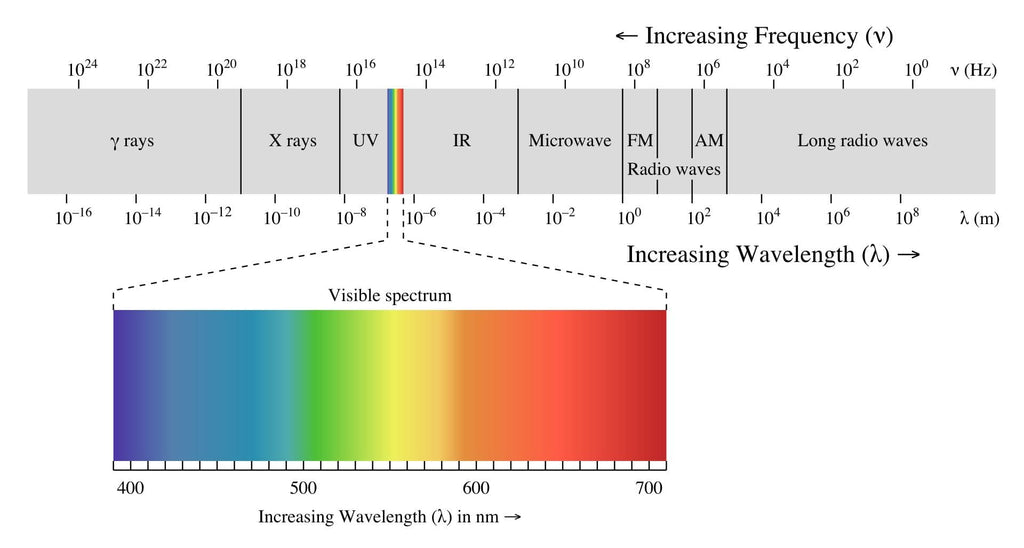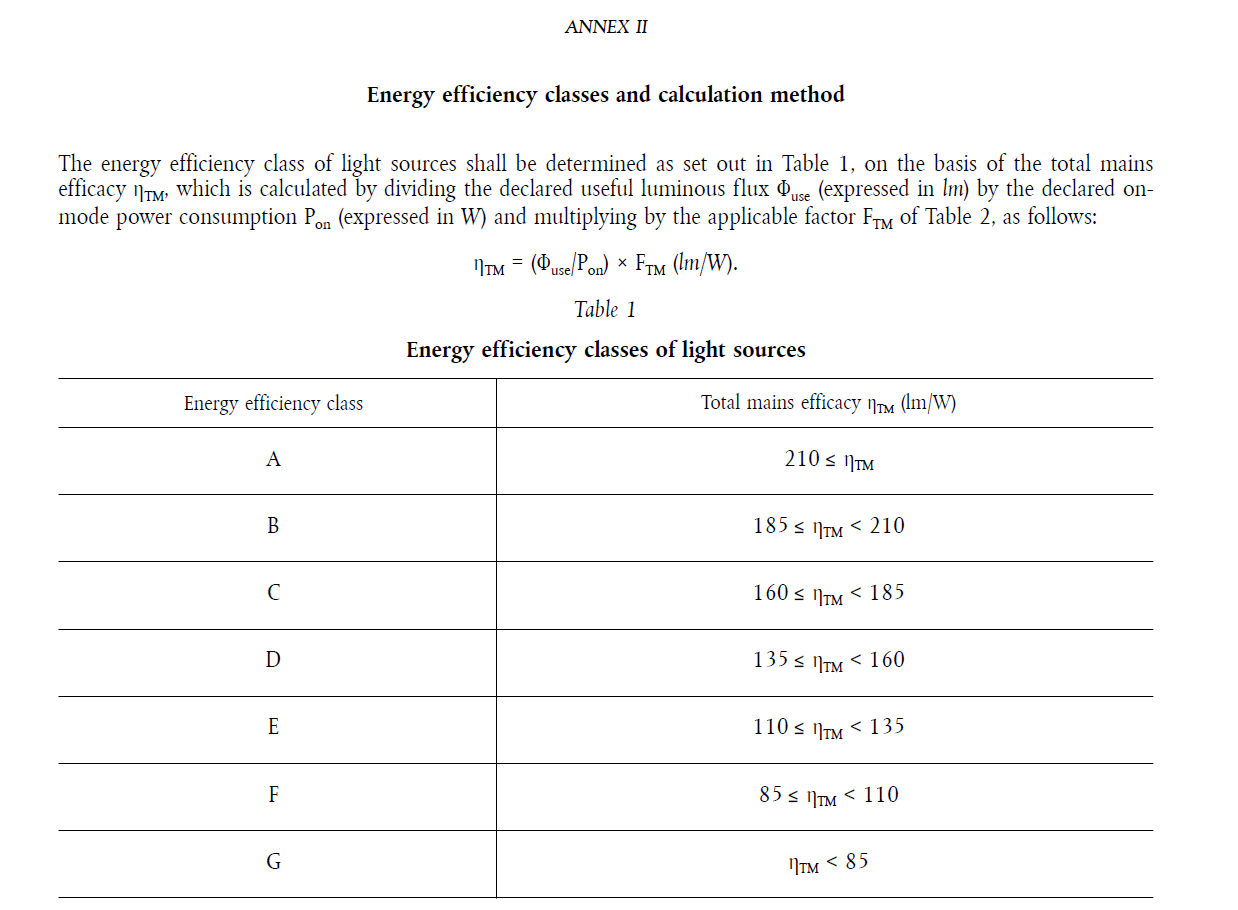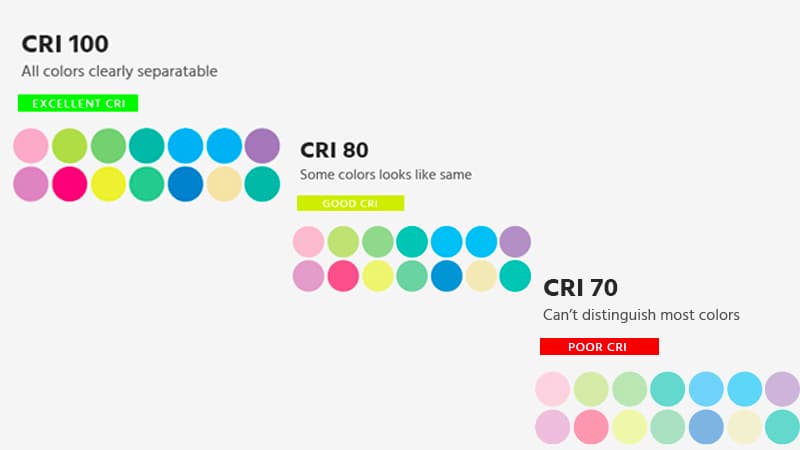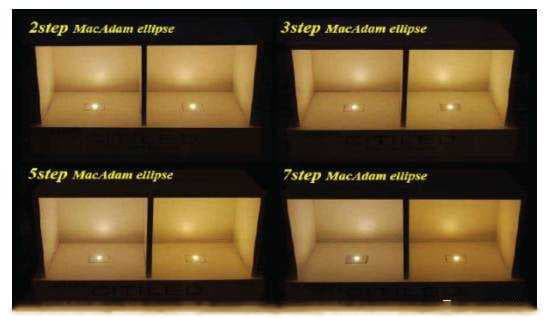Here at TILLUME LEDs, we try to make LED lighting easy to understand for our customers. Read below to understand the terminology used on this website and learn about LEDs and lighting science
General Lighting parameters
What are lumens (lm)?
Lumen is the measurement value of brightness. It said the power of light which can be seen by the eye. In fact, light is an electromagnetic wave, In common the frequency of electromagnetic waves that the average human eye can perceive is 380~750THz, and the wavelength is between 780~380nm. So we can say the total watt of light in 380nm-780nm is equal to the lumen

Because incandescent lighting have the same energy conversion efficiency by different manufacturers, we are all accustomed to using watts to measure the brightness of a light. That is no problem with incandescent lighting. But it is not suitable for LED. Different manufacturers using different technology and quality level, the energy conversion efficiency will be a big difference, low quality may be 60-70lm/w, and the high quality will be 100-120lm/w for the same lamp. So we have to use lumen. Lumen is the most important parameter when choosing the LED light you need. Comparing lumen output between different products will help you to buy the right LED lamp at a reasonable price.
What is AC?
This is Alternating Current. This is the electricity that is used in most spaces. Generally, there have to 2 kinds of voltage in different countries all over the world. One is 220-240V, and the other is 110-130V. The value of voltage we said is a valid value the voltage value is different each time. It looks the same as a sine wave.

From the picture, we can know the highest voltage is 311V, and 220V is near the avg value(you can understand it as simple). In developed countries, the voltage is stable. But in some developing countries, it usually is not stable due to weak basic power facilities. It may be a higher voltage or lower voltage than the rated voltage.
What are DC and safety voltage?
This is Direct Current. The current always moves in the same direction. So when the device asks for direct current, we need to connect wires as positive and negative electrodes. Safe voltage refers to the voltage that will not cause direct death or disability. The industry stipulates that the safe voltage is not higher than 36V, and the continuous contact safe voltage is 24V.
What is a Watt?
One watt is equivalent to one joule per second, and it's a measure of power consumption that your power company uses to calculate how much energy you're consuming. In the LED era, power cannot be used as a parameter to evaluate whether the light bulb is bright enough, because the better the LED, the more lumens can be emitted with less power.
What is luminous efficacy?
It is the result of dividing lumen by power. The higher the value, the higher the energy conversion efficiency. The figure below shows the new Erp's regulations on energy efficiency labels. We can see that the higher the light efficiency, the more energy saving

What is CRI and why is it important?
CRI is an acronym for Color Rendering Index, when we want to know how colors look under a sunlight source, CRI is an important parameter. The higher the CRI value, the closer the color of the object being illuminated is to its true color. CRI is measured from 0 to 100. CRI80+ is the industry standard for most applications while CRI90+ is a premium level that can show your home, clothing, and furnishing look best.

What is color temperature?

What is Beam Angle?
The angle formed from the main axis with the strongest light source intensity to the 50% position of the luminous intensity on both sides is the so-called beam angle.

For the same light source, if the beam angle is larger, the central light intensity will be smaller, and the light spot will be softer. If the beam angle is smaller, the central light spot will be stronger and the light spot will be clearer.
Professional lighting knowledge
What is the difference between CIE and TM-30 standards?
- TM-30 using 99 sample colors to evaluate the color rendering parameters of light sources.
- CIE using 8 or 15 sample colors to evaluate the color rendering performance.

Besides CRI, you also need to care about Rg and Rf
Rf is Color Fidelity Index, it is from 0 to 100, it is similar to CRI, but it uses 99 sample colors. Rf =100 is the maximum value, which means that there is no color difference with the color under the natural light source, and the color effect is realistic.
The color saturation Rg is used to characterize the color gamut index GAI (Gamut Area Index) of the light source, that is, the saturation degree of each standard color compared with the reference light source under the illumination of the test light source. The index of 100 represents the best saturation.
- Rg = 100, which means that the saturation of the light source is the same as that of natural light, and the color saturation is moderate
- Rg>100, which means that the light source can increase the saturation of the color, and the object looks more vivid and vibrant
- Rg<100, which means that the saturation of the color will be reduced under the test light source, the color saturation will be insufficient, and the object will become dull and dull
Why do my lights have different colors, What is SDCM?
SDCM is a unit of measurement for color tolerance. It is also an abbreviation for Standard Deviation of Color Matching.
Color tolerance refers to the difference between the formula calculated by the computer and the target standard. It is calculated under a single lighting source. The smaller the value, the higher the accuracy.
Relevant standards require that SDCM should be less than 6, and usually, high-quality light sources can reach 3 and below
What is Binning?
Simply put, binning is the process of grouping LEDs during production so that they matched with LEDs of the same color sector. For example, all 2700K chips are ‘binned’ together and are separated from chips that have a higher/lower color temperature. Learn more about Binning here.
If LED are binned together with a very narrow CCT range, Lighting color consistency will be good
What is the voltage drop?
When installing LED strips or other DC-powered fixtures, be sure to consider the effect of "voltage drop". In a DC circuit, the voltage drops gradually as it passes through a length of wire, and the longer the line, the greater the voltage drop. Therefore, for each meter of wire, the available voltage decreases gradually along the length of the wire. This is also why one end of the strip light is brighter than the other.
What is peak current?
Someone also called it Inrush Current
The peak current generally refers to the transient high-amplitude current signal that appears in the power supply line or electronic circuit. It may be generated when the power supply is started or turned off, or it may be the interference caused by other equipment. Electrical appliances and electronic equipment must take various measures to suppress the peak current and make the equipment work stably.


